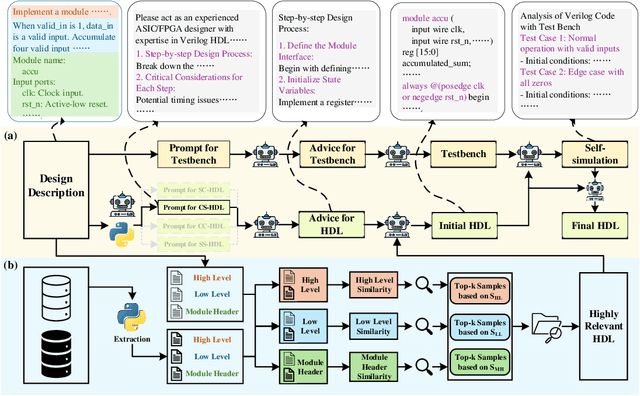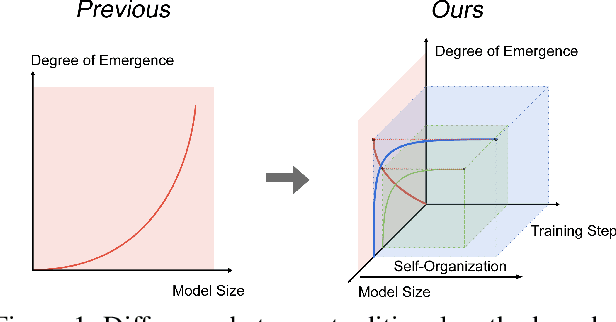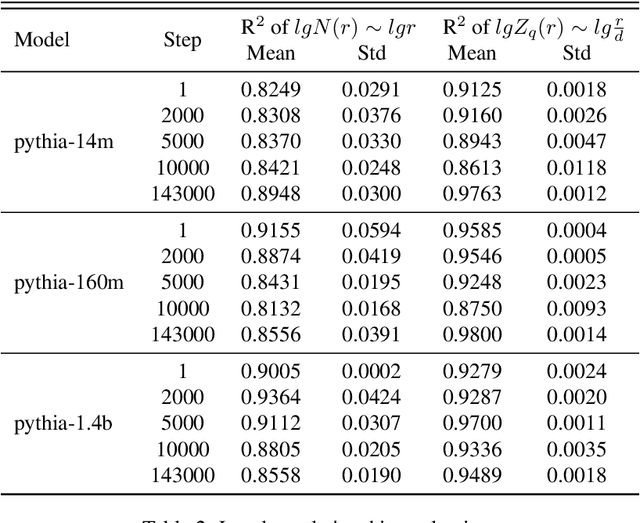Heng Ping
H$^2$GFM: Towards unifying Homogeneity and Heterogeneity on Text-Attributed Graphs
Jun 10, 2025Abstract:The growing interests and applications of graph learning in diverse domains have propelled the development of a unified model generalizing well across different graphs and tasks, known as the Graph Foundation Model (GFM). Existing research has leveraged text-attributed graphs (TAGs) to tackle the heterogeneity in node features among graphs. However, they primarily focus on homogeneous TAGs (HoTAGs), leaving heterogeneous TAGs (HeTAGs), where multiple types of nodes/edges reside, underexplored. To enhance the capabilities and applications of GFM, we introduce H$^2$GFM, a novel framework designed to generalize across both HoTAGs and HeTAGs. Our model projects diverse meta-relations among graphs under a unified textual space, and employs a context encoding to capture spatial and higher-order semantic relationships. To achieve robust node representations, we propose a novel context-adaptive graph transformer (CGT), effectively capturing information from both context neighbors and their relationships. Furthermore, we employ a mixture of CGT experts to capture the heterogeneity in structural patterns among graph types. Comprehensive experiments on a wide range of HoTAGs and HeTAGs as well as learning scenarios demonstrate the effectiveness of our model.
HDLCoRe: A Training-Free Framework for Mitigating Hallucinations in LLM-Generated HDL
Mar 18, 2025



Abstract:Recent advances in large language models (LLMs) have demonstrated remarkable capabilities in code generation tasks. However, when applied to hardware description languages (HDL), these models exhibit significant limitations due to data scarcity, resulting in hallucinations and incorrect code generation. To address these challenges, we propose HDLCoRe, a training-free framework that enhances LLMs' HDL generation capabilities through prompt engineering techniques and retrieval-augmented generation (RAG). Our approach consists of two main components: (1) an HDL-aware Chain-of-Thought (CoT) prompting technique with self-verification that classifies tasks by complexity and type, incorporates domain-specific knowledge, and guides LLMs through step-by-step self-simulation for error correction; and (2) a two-stage heterogeneous RAG system that addresses formatting inconsistencies through key component extraction and efficiently retrieves relevant HDL examples through sequential filtering and re-ranking. HDLCoRe eliminates the need for model fine-tuning while substantially improving LLMs' HDL generation capabilities. Experimental results demonstrate that our framework achieves superior performance on the RTLLM2.0 benchmark, significantly reducing hallucinations and improving both syntactic and functional correctness.
Network-informed Prompt Engineering against Organized Astroturf Campaigns under Extreme Class Imbalance
Jan 21, 2025Abstract:Detecting organized political campaigns is of paramount importance in fighting against disinformation on social media. Existing approaches for the identification of such organized actions employ techniques mostly from network science, graph machine learning and natural language processing. Their ultimate goal is to analyze the relationships and interactions (e.g. re-posting) among users and the textual similarities of their posts. Despite their effectiveness in recognizing astroturf campaigns, these methods face significant challenges, notably the class imbalance in available training datasets. To mitigate this issue, recent methods usually resort to data augmentation or increasing the number of positive samples, which may not always be feasible or sufficient in real-world settings. Following a different path, in this paper, we propose a novel framework for identifying astroturf campaigns based solely on large language models (LLMs), introducing a Balanced Retrieval-Augmented Generation (Balanced RAG) component. Our approach first gives both textual information concerning the posts (in our case tweets) and the user interactions of the social network as input to a language model. Then, through prompt engineering and the proposed Balanced RAG method, it effectively detects coordinated disinformation campaigns on X (Twitter). The proposed framework does not require any training or fine-tuning of the language model. Instead, by strategically harnessing the strengths of prompt engineering and Balanced RAG, it facilitates LLMs to overcome the effects of class imbalance and effectively identify coordinated political campaigns. The experimental results demonstrate that by incorporating the proposed prompt engineering and Balanced RAG methods, our framework outperforms the traditional graph-based baselines, achieving 2x-3x improvements in terms of precision, recall and F1 scores.
A structure-aware framework for learning device placements on computation graphs
May 23, 2024



Abstract:Existing approaches for device placement ignore the topological features of computation graphs and rely mostly on heuristic methods for graph partitioning. At the same time, they either follow a grouper-placer or an encoder-placer architecture, which requires understanding the interaction structure between code operations. To bridge the gap between encoder-placer and grouper-placer techniques, we propose a novel framework for the task of device placement, relying on smaller computation graphs extracted from the OpenVINO toolkit using reinforcement learning. The framework consists of five steps, including graph coarsening, node representation learning and policy optimization. It facilitates end-to-end training and takes into consideration the directed and acyclic nature of the computation graphs. We also propose a model variant, inspired by graph parsing networks and complex network analysis, enabling graph representation learning and personalized graph partitioning jointly, using an unspecified number of groups. To train the entire framework, we utilize reinforcement learning techniques by employing the execution time of the suggested device placements to formulate the reward. We demonstrate the flexibility and effectiveness of our approach through multiple experiments with three benchmark models, namely Inception-V3, ResNet, and BERT. The robustness of the proposed framework is also highlighted through an ablation study. The suggested placements improve the inference speed for the benchmark models by up to $58.2\%$ over CPU execution and by up to $60.24\%$ compared to other commonly used baselines.
Exploring Neuron Interactions and Emergence in LLMs: From the Multifractal Analysis Perspective
Feb 14, 2024



Abstract:Prior studies on the emergence in large models have primarily focused on how the functional capabilities of large language models (LLMs) scale with model size. Our research, however, transcends this traditional paradigm, aiming to deepen our understanding of the emergence within LLMs by placing a special emphasis not just on the model size but more significantly on the complex behavior of neuron interactions during the training process. By introducing the concepts of "self-organization" and "multifractal analysis," we explore how neuron interactions dynamically evolve during training, leading to "emergence," mirroring the phenomenon in natural systems where simple micro-level interactions give rise to complex macro-level behaviors. To quantitatively analyze the continuously evolving interactions among neurons in large models during training, we propose the Neuron-based Multifractal Analysis (NeuroMFA). Utilizing NeuroMFA, we conduct a comprehensive examination of the emergent behavior in LLMs through the lens of both model size and training process, paving new avenues for research into the emergence in large models.
Unlocking Deep Learning: A BP-Free Approach for Parallel Block-Wise Training of Neural Networks
Dec 20, 2023



Abstract:Backpropagation (BP) has been a successful optimization technique for deep learning models. However, its limitations, such as backward- and update-locking, and its biological implausibility, hinder the concurrent updating of layers and do not mimic the local learning processes observed in the human brain. To address these issues, recent research has suggested using local error signals to asynchronously train network blocks. However, this approach often involves extensive trial-and-error iterations to determine the best configuration for local training. This includes decisions on how to decouple network blocks and which auxiliary networks to use for each block. In our work, we introduce a novel BP-free approach: a block-wise BP-free (BWBPF) neural network that leverages local error signals to optimize distinct sub-neural networks separately, where the global loss is only responsible for updating the output layer. The local error signals used in the BP-free model can be computed in parallel, enabling a potential speed-up in the weight update process through parallel implementation. Our experimental results consistently show that this approach can identify transferable decoupled architectures for VGG and ResNet variations, outperforming models trained with end-to-end backpropagation and other state-of-the-art block-wise learning techniques on datasets such as CIFAR-10 and Tiny-ImageNet. The code is released at https://github.com/Belis0811/BWBPF.
Leveraging Reinforcement Learning and Large Language Models for Code Optimization
Dec 09, 2023



Abstract:Code optimization is a daunting task that requires a significant level of expertise from experienced programmers. This level of expertise is not sufficient when compared to the rapid development of new hardware architectures. Towards advancing the whole code optimization process, recent approaches rely on machine learning and artificial intelligence techniques. This paper introduces a new framework to decrease the complexity of code optimization. The proposed framework builds on large language models (LLMs) and reinforcement learning (RL) and enables LLMs to receive feedback from their environment (i.e., unit tests) during the fine-tuning process. We compare our framework with existing state-of-the-art models and show that it is more efficient with respect to speed and computational usage, as a result of the decrement in training steps and its applicability to models with fewer parameters. Additionally, our framework reduces the possibility of logical and syntactical errors. Toward evaluating our approach, we run several experiments on the PIE dataset using a CodeT5 language model and RRHF, a new reinforcement learning algorithm. We adopt a variety of evaluation metrics with regards to optimization quality, and speedup. The evaluation results demonstrate that the proposed framework has similar results in comparison with existing models using shorter training times and smaller pre-trained models. In particular, we accomplish an increase of 5.6% and 2.2 over the baseline models concerning the %OP T and SP metrics.
 Add to Chrome
Add to Chrome Add to Firefox
Add to Firefox Add to Edge
Add to Edge